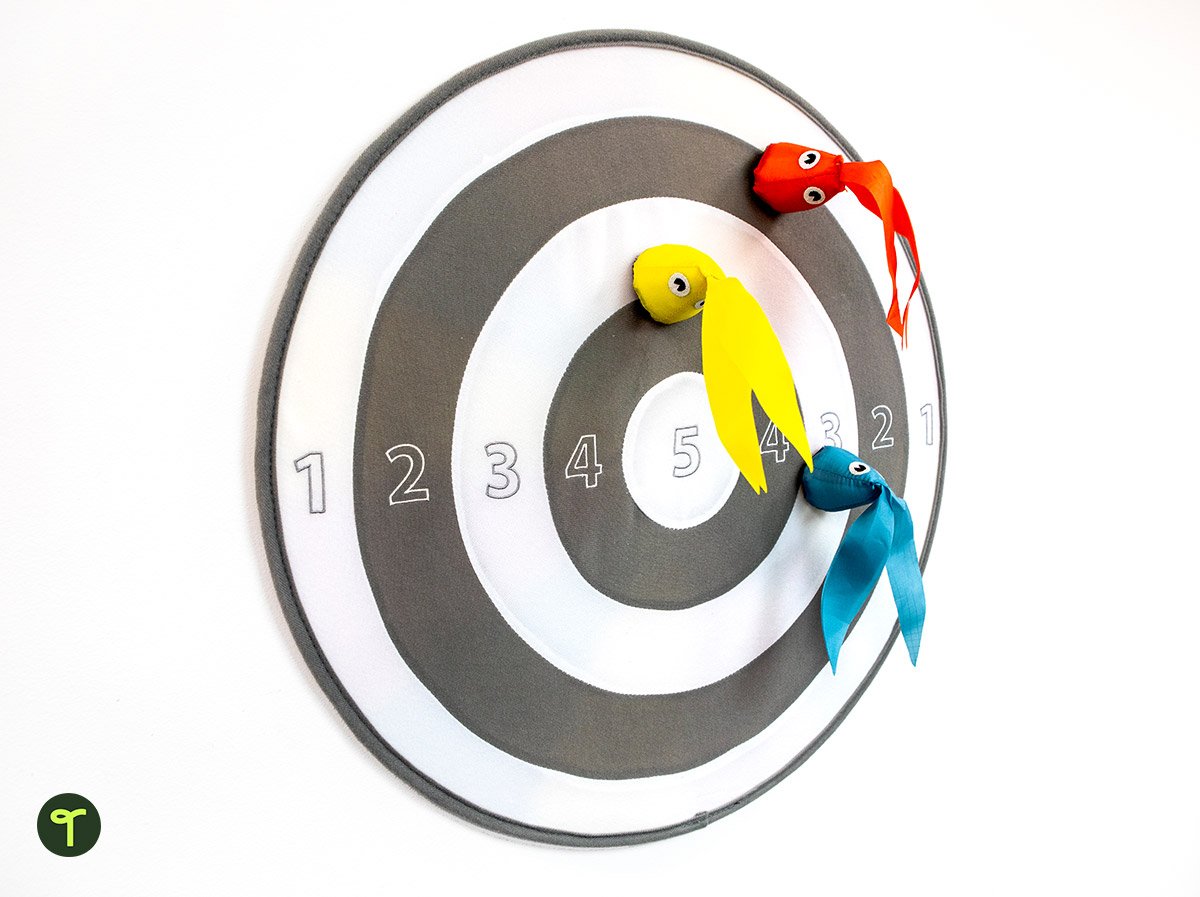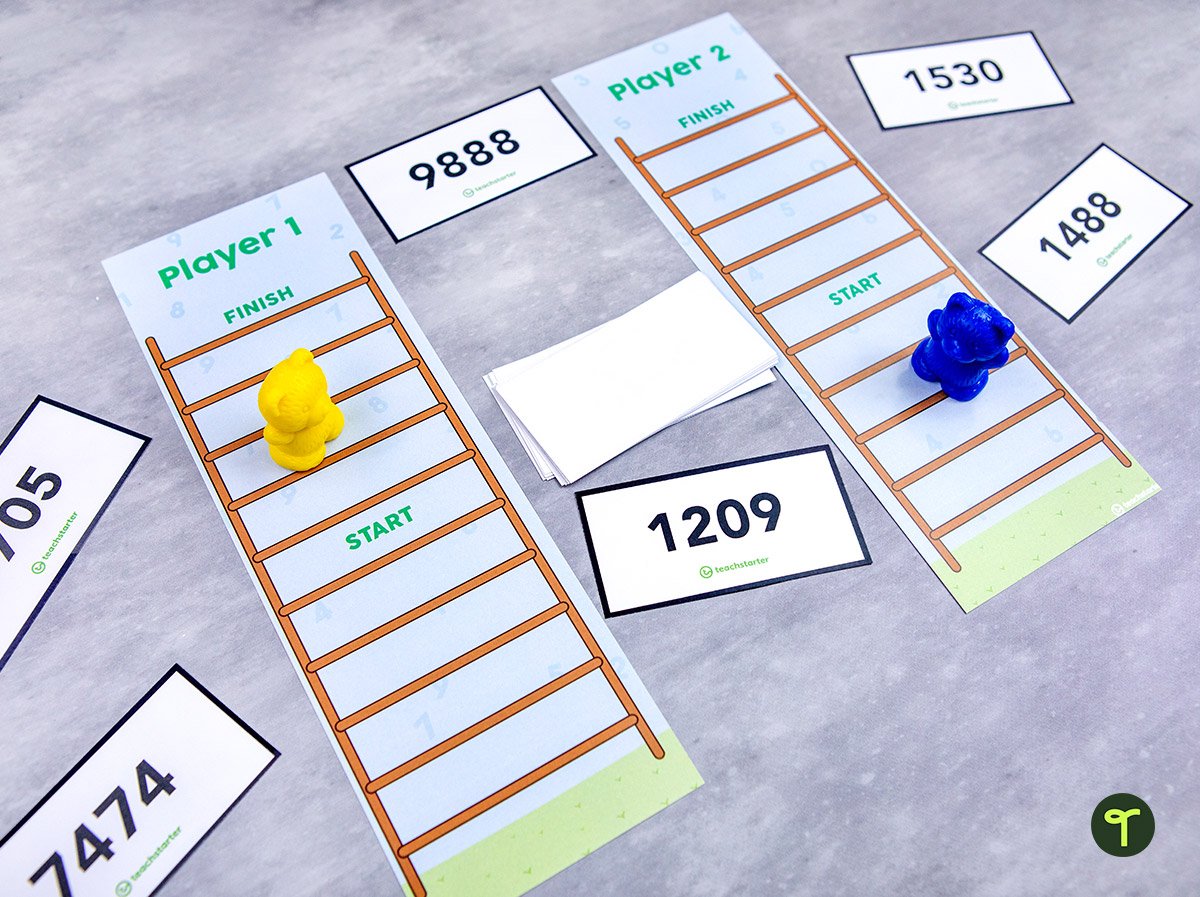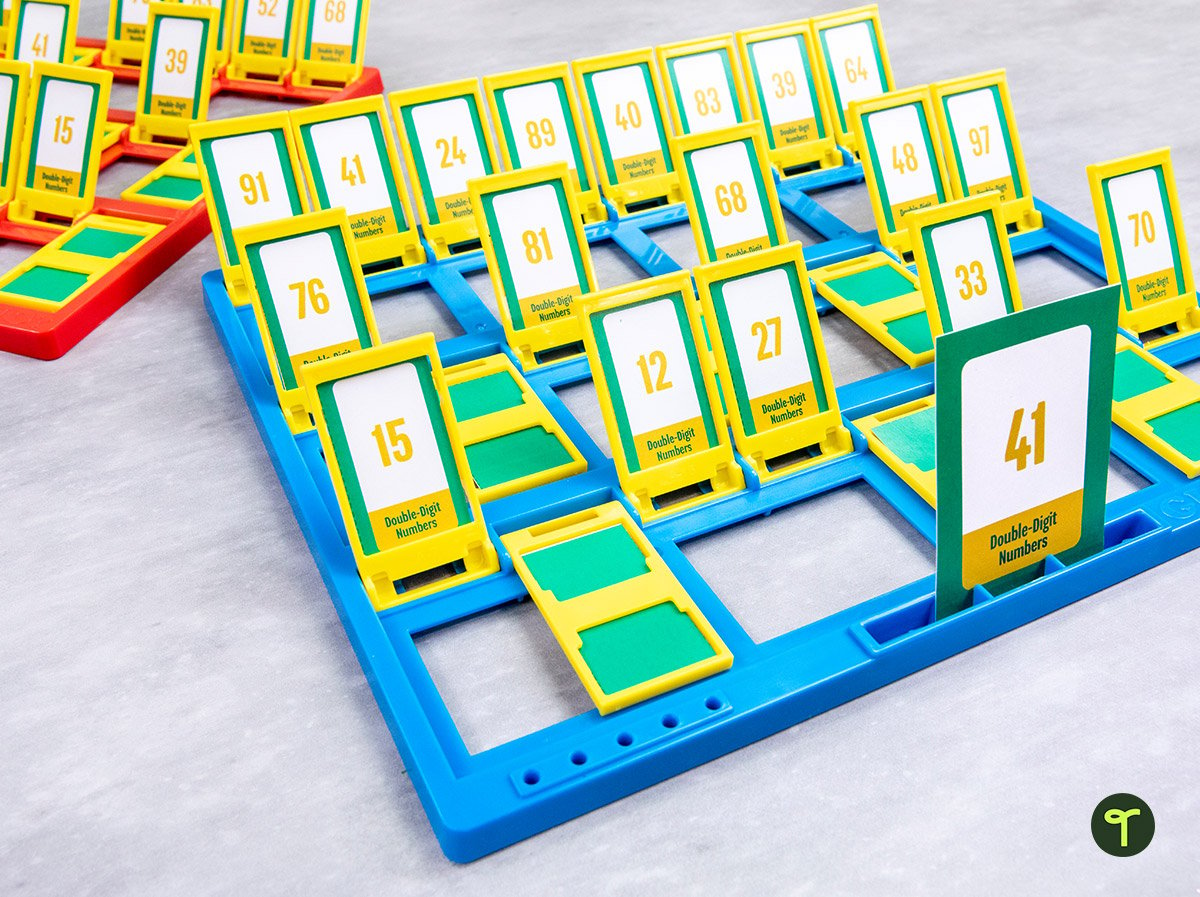Are you on the hunt for new place value activities to make this core numeracy concept stick in students’ minds? When students understand the value of a number, it opens the doors to an entire world of mathematics!
Think about something you’ve done recently that involved numbers. Have you calculated the price of something? Measured amounts for a recipe? Maybe you tried to figure out how much time a journey would take? How hard would this all have been to do without place value?
Understanding place value is essential for learning mathematics, and teaching place value right from the early years lays the foundation for many mathematical concepts that your students will be taught as they progress through school. While it can be a difficult concept for some young learners, once taught it will become second nature and stay with them for life.
The teachers of the Teach Starter team have put together some important strategies for teaching place value in the early years, plus some of our favourite activities to engage your students in hands-on learning. Read on for our best tips and tricks!
Strategies for Teaching Place Value
Use Number Lines
Number lines offer students a visual representation of the relative values of different numbers and make a great addition to your maths rotations. If you’re just introducing place value to your early years students, use the number line to demonstrate how numbers increase in value as they move to the right.
Teaching students how to compare numbers? A number line can help students compare numbers with different place values. For example, you can ask your students to plot the numbers 32 and 47 on the number line and then compare their positions to determine which number is greater.
Are you exploring decimals this week? Use a number line to teach decimal place value. Students can plot decimals on the number line and show how the position of the decimal point determines the value of each digit.
Make Use of Manipulatives
When it comes to place value teaching and learning, hands-on manipulatives are a must.
You can use a tonne of different materials such as Base-10 blocks, Unifix cubes, paper clips and even paddle pop sticks. These manipulatives allow students to physically see and manipulate numbers, which can help them understand the concept of place value in a concrete way.
Teach Starter Teacher Tip: Incorporating printable activities that tie into their manipulatives is also a great way to keep your students engaged with the learning of place value. In this activity, for example, students need to create a Place Value Castle. Students could use real MABs to create the castle as well as the paper version.
Place Value Houses
Another great visual representation that can make the abstract concept of place value more concrete for young learners are Place Value Houses. These pictorial representations consist of a series of ‘houses,’ each representing a different place value, such as ones, tens, hundreds, thousands, etc.
Each house is divided into compartments or rooms, with the compartment on the right representing the lowest place value, and the compartment on the left representing the highest place value. Each room is labelled with its corresponding place value, such as ‘ones,’ ‘tens,’ ‘hundreds,’ etc. In each house, students record how many ones, tens or hundreds are in each place within the individual compartments.
The ‘rooms’ inside each house are a visual reminder to students that there is only enough room for nine units, tens or hundreds in each column. Once the ‘house’ is full, it is necessary to move over into the next ‘house.’ For example, if there are nine units in the units house, and you want to add another unit, you must now move all of the units into the tens house to create one ten.
This helps them see how each digit in a number represents a certain quantity and how the position of each digit affects its value.
Partitioning
Providing multiple opportunities for students to partition (split) numbers is a solid way to really cement their understanding of digits within numbers. Through the process of splitting numbers into their parts according to place value, students develop an understanding of the relationship between the value of a digit and its position in a number. This helps students to understand that the value of each digit in a number is determined by its position relative to the other digits in the number. For example, in the number 348, the 3 represents three hundred, the 4 represents four tens, and the 8 represents eight ones.
Give this strategy a try with these fun activities!
- Place Value Spin activity — Students partition two-digit numbers into ‘tens’ and ‘ones.’ Once your students have completed the sheet, why not get them to give their sheet to a partner and have their partner then partition the numbers into ‘tens’ and ‘ones.’
- Roll It, Make It, Expand It! Place Value — Students will roll two dice and select one dice as their ‘tens’ and one dice as their ‘ones’. Students then record the number they have rolled, make it with MAB, draw what they have made and show it in expanded form. This worksheet encompasses a number of strategies so it is a fantastic activity to do with your students.
Teach 10 as a Bundle of Ones
For little learners, teaching students that 10 is a bundle of ones or 10 individual units is a helpful strategy to introduce place value.
When you’re teaching 10 as a bundle of ones, students learn that counting to 10 means counting one by one, and when they reach the number 10, they have counted 10 individual units. It also means that when adding or subtracting numbers that involve 10, such as 10 + 4 or 10 – 3, students understand that they are adding or subtracting from a bundle of 10 units, rather than just a single digit.
Simple activities to teach this strategy include bundling together objects into groups of 10 and then counting in 10s to work out how many there are all together.
Using a printable Tens Frames along with your maths manipulatives is a classic way to teach this concept. Have students group single objects into groups of 10s, filling the frame. This helps students visualise 10 as a complete frame.
Another simple visual you can show to your students is to line up a Base-10 rod with 10 ones blocks and show how they are equal. Place Value Houses are also a great visual to teach this concept!
[resource:12855][resource:4475610][resource:12861][resource:4150978]
Number of the Day
Completing a number of the day activity is another strategy our teacher team uses to incorporate place value into the classroom, exposing students to the concept on a daily basis throughout the school year. A number of the day has students focusing on one number and showing their full understanding of that number. Activities can include:
- Writing the number in word form
- Writing the number in digit form
- Recording the place value of each digit
- Writing the number in expanded form
- Creating a number pattern starting with the given number
- Representing the number with beads on an abacus
- Writing a number greater than the given number
- Writing a number less than the given number
Fun Place Value Activities
Looking for some games to get your students excited about place value? We’ve got you covered with fun activities kids love!
Place Value Missiles
If you are looking for an active way to teach place value, we’ve got just the right place value game for you. Place Value Missiles is an action-packed game that involves targeting numbers using airborne creatures to generate a two to five-digit number! Yes, we’re suggesting you let kids throw things in the classroom, but we promise it’s worth it.
To enjoy place value games dart style, you’ll need an IKEA LUSTIGT Dart game. It includes a reversible dartboard and six cute figures, plus it’s already labelled with numbers!
Activity Idea (small group or whole class):
- Encourage students to take turns throwing a missile.
- As a class, record the numbers hit.
- Arrange the digits to create a number with the greatest/smallest possible value.
- Expand each digit to show the value of each digit.
Fishing for Place Value
This fishing game is a fun, hands-on activity that will ramp up the fun during maths groups! Thankfully there is no water involved.
To get started you need:
- Base-10 blocks
- Small and strong magnets
- Blue-tac
- String
- A suitable fishing rod (we used a ruler)
- Timer (optional)
To create this place value game, attach magnets to your Base-10 blocks. Next, attach a piece of string to your fishing rod and a strong magnet to the end of the string.
How to Play
- Encourage your students to fish for as many Base-10 blocks as possible in 1 minute.
- Ask students to use their knowledge of place value to calculate the total value of their catch!

Race Up the Rounding Ladder
Are your students up to the challenge of using this fun, engaging (and FREE) place value game, 4-Digit Place Value Game – Race Up the Rounding Ladder? Of course, they are!
To play this place value game, your students will need knowledge and understanding of rounding numbers up or down to the nearest 10. This game also offers the option of rounding numbers to the nearest 100 or 1000.
How to Play
Working with a partner, students take turns to:
- Pick a card.
- Round the number on the number cards to the nearest 10, 100, or 1000 (depending on what is decided before commencing the game).
- If they round the number up, they move up the ladder on their game board.
- If they round the number down, they move down the ladder.
The student who reaches the top of the ladder on their game board first is the winner!
What’s My Card? Double-Digit Board Game
Our What’s My Card? Double-Digit Board Game has been designed to use in conjunction with a Guess Who? game board. Players try to guess their opponent’s mystery card by asking place value questions.
This teaching resource includes:
- A set of game cards (front and back)
- A set of mystery cards (front and back)
- An instruction page with possible questions players can use
Look out for the printing instructions that come with this cool teaching resource. And don’t miss the What’s My Card? Resource Pack that includes plenty of other versions of this game that explore other learning areas.










Great activities. thank you
Thank you, Janet!
Great! Great! Great! Thank you for creative activities to assist in learning and consolidation.
Hi Zuriette, Thank you for your lovely comment. It's always nice to hear your feedback.